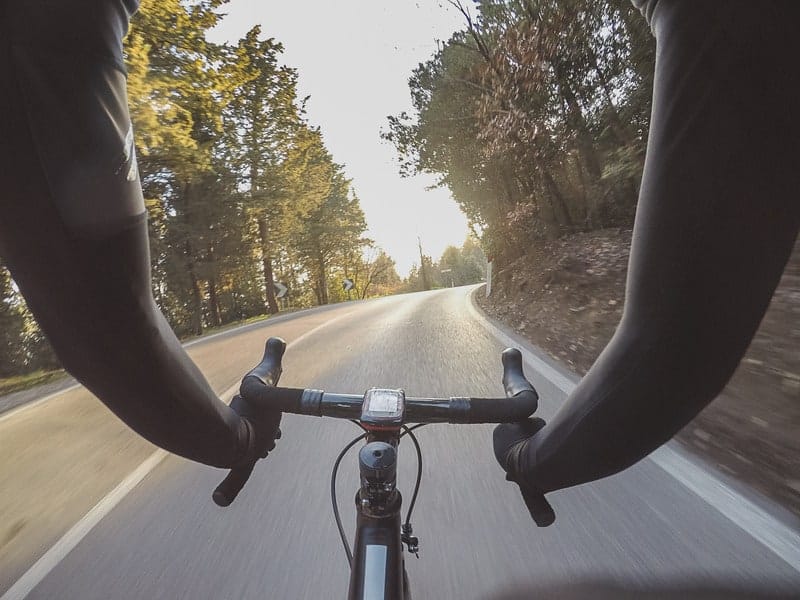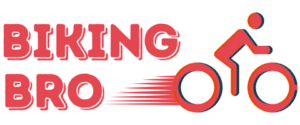Maybe you have heard of this term, and you’re wondering what cycling cadence is. If you want to achieve a smooth and effortless glide while riding your bike, you need to work on your cadence.
Being able to achieve the perfect cadence, that matches your ability as a biker, will make things a lot easier for you. You must keep in mind that maintaining leg coordination while riding in any situation is paramount.
What Does Cadence Mean in Cycling?
In cycling terms, cadence is the rate at which a cyclist pedals. It’s usually calculated in revolutions per minute (RPM). To further break it down, one stroke is half of a full rev and your cadence is about 200 strokes.
Now, I would like to explain slow-twitch and fast-twitch muscles. Slow-twitch muscles are the muscles your body makes use of when you’re riding in a low gear, while fast-twitch muscles are muscles engaged when riding at high gear. If you’re looking to achieve a high cadence rate, you have to ride in the low gear. This is because the slow-twitch muscles, associated with low gear, are fatigue-resistant (they recover quickly when rested) and they also burn body fat.
On the other hand, fast-twitch muscles get fatigued easily and don’t recover quickly. They burn glycogen for energy release and keep you riding at a low cadence. Low cadence at high gear is not what you need to have a great time riding because riding at a low cadence makes your muscles get weak fast.
You need that high pedaling rate, so go for a low gear.
What is the Best Cadence for Cycling?

If you’re wondering about this, you should know that there’s no specific rate. A rate of 90 RPM is recommended for getting the best from your slow-twitch muscles and avoiding leg fatigue. On average, regular cyclists have a pedaling rate of 60 RPM. More professional and experienced cyclists have cadence ranging from 80 to 100 RPM.
At this point, you might be thinking of improving your cadence to attain a better/higher rate. This cannot be achieved in an instant. It might take months to make significant improvements. This can be attributed to the fact that your body needs to change from its present convenient state. Loads of work will be put in by your body systems so get ready.
How to Measure Cadence?
Knowing your cadence is quite important, especially if you really want to get into cycling. These days, good BMX bikes under 300 are equipped with instruments that take measurement of your pedaling rate and record it for later reference.
The record is shown on a handlebar-affixed display system. Older bike models might not have this feature, so you may measure your cadence by observing the rate at which your knees rise within an interval of 30 seconds.
All you need is to keep a stopwatch on you as you pedal your bike and use a bicycle GPS tracker. I advise that you aim for a cadence of 80 RPM. You don’t need to hit the super-high pro levels.
The Relation Between Gears and Cadence
There’s something called gear ratio. This ratio affects the rate at which you pedal. To pedal faster, you have to reduce gear ratio. Note that you shouldn’t excessively reduce the gear ratio. This will only be an avenue to waste energy.
Anytime you’re riding and you require a large amount of force to be applied on your pedal, it means the gear ratio is too high. This makes you go at a slower rate while also exhausting yourself.
How to Make Your Bike Go Faster?

The amount of power that’s available to your bike is directly proportional to the speed that you will achieve. The larger the power generated, the higher the speed achieved. To be able to generate the power that you need to attain high speed with your commuter bike, you must take both cadence and input force into consideration. A combination of these two will generate power for high speed.
Let’s do a little calculation. If you keep the value of generated power constant and you alternately vary both cadence and input force, a high cadence and lowered input force would give you your generated power value.
If you alternate to a low cadence and increased input force, you would also get the same value of generated power. Now, if you increase both cadence and input power, you will get an increase in the value of generated power.
Now you can see that having enough power with the help of road bike wheelsets is needed to make your bike go faster.
Conclusion
Now that you know what cadence cycling is, you should understand that cadence is a paramount key to unlocking your ultimate speed potentials in cycling. Some drills like the one-legged pedaling drill and spin-ups can improve your pedal stroke.
Remember the importance of power generation in achieving your speed goal. Combine your cadence and pedaling force properly and you will have a nice time biking.
